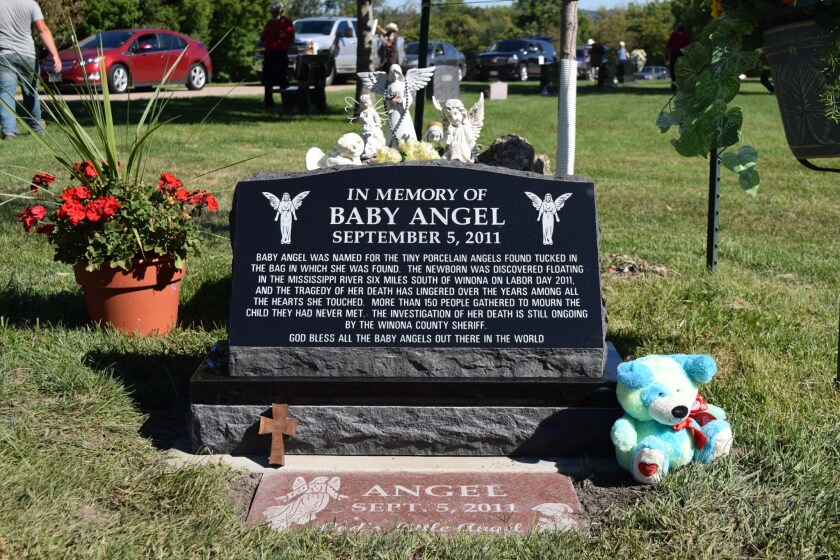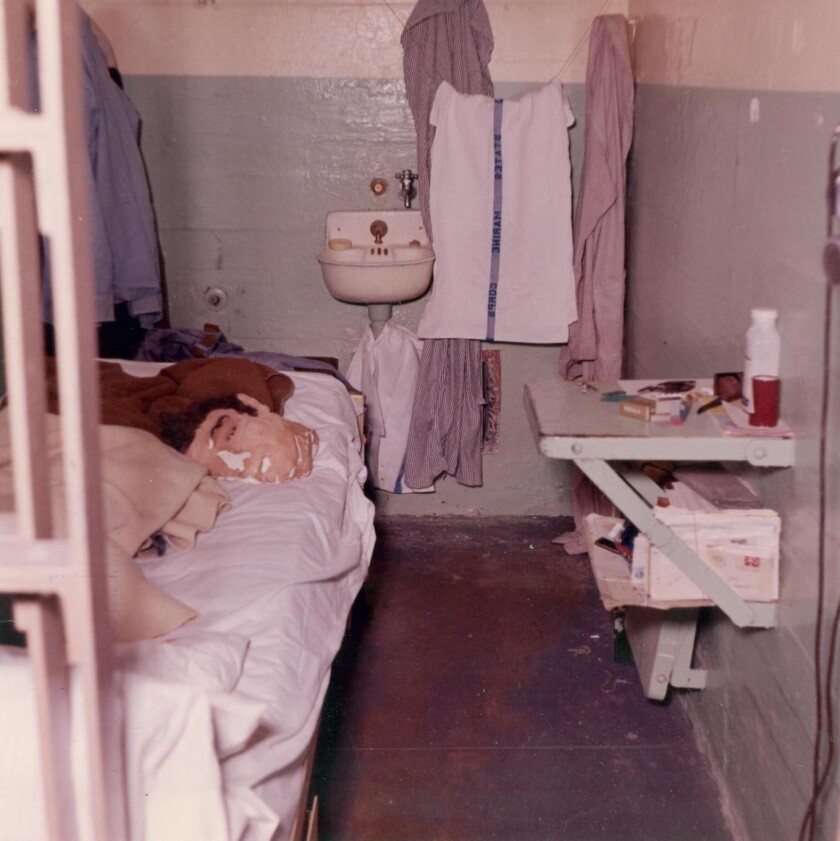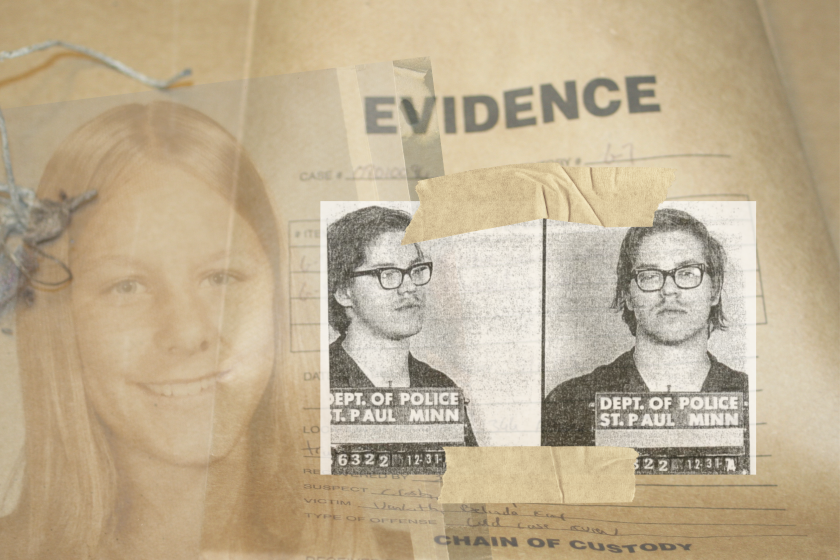FARGO — From the outside of the small stucco house, there are no clues of the self-described "predator" who once lived there. In late winter 2024, bird nests adorn trees in the yard. A long walkway leads up to a screened-in front porch.
The neighborhood just north of downtown Fargo is quiet. But 19 years ago, this was the scene of a massive investigation that ended with a serial killer on death row, evidence of a system of laws that failed the public, and questions for two Fargo residents who inadvertently helped ease the serial killer’s escape.
What local police officers found inside the home of Joseph Edward Duncan III helped put him on death row with 11 life and three death sentences at the United States Penitentiary in Terre Haute, Indiana. He died of a brain tumor at 58 years old on March 28, 2021, before he could be executed.
The serial killer
Joseph Edward Duncan III — a self-described “sick” and “twisted pervert” — found the inspiration to begin his original blog, called the “Fifth Nail,” while he lived in a first-floor room of the house.
ADVERTISEMENT
“The ‘Fifth Nail’ is the one that we drive into our own soul; it is the nail that destroys us, and causes us to be reborn at the same time,” Duncan described the blog while in prison. A friend on the outside helped him keep the blog updated, he wrote.
In his blog, police and court records, Duncan said he continuously fought against the “predator” he knew he was, and was able to stay clear of breaking the law.
Until 2004.
He then left a trail of blood and violence that stretched from Detroit Lakes, Minnesota, and Fargo, to Idaho and then Montana. Investigators seized discs, computers with programs he encrypted, a bag of auburn-colored human hair, a sleeping bag with an “adult sized bloody footprint on it,” notebooks and more, a total of 21 boxes worth of belongings, in the basement of his home in Fargo. All of which were turned over to the FBI.

While armed with a Browning 12-gauge shotgun on May 16, 2005, Duncan brutally murdered Shasta Groene’s mother, Brenda, her 13-year-old brother, Slade, her mother’s boyfriend, Mark McKenzie, with what later was learned to be a FatMax claw hammer, according to testimony from the 2007 trial.
He then kidnapped 8-year-old Shasta and her other brother, Dylan, who was one year older, and took them to the edge of Joshua Tree National Forest in Montana, where he tortured and molested them over a seven-week period, eventually killing Dylan and burning his body.
Before his death, it was discovered that Duncan murdered seven known people. He meant to kill Shasta as well, but she survived.
“It’s probably the most horrendous case we’ve ever seen,” said Ben Wolfinger, former sheriff of the Kootenai County Sheriff’s Department in Idaho.
ADVERTISEMENT
“It is a lightning strike case for … I mean, Duncan was just traveling through and saw the Groene kids just sitting outside by the road. It could have happened anywhere, but it just happened to happen here. We’ve had murder cases before, but not the serial-killer-kill-the-family, kidnap-the-children cases, and I spent 38 years in the sheriff’s department,” said Wolfinger, who recently learned that Shasta's house in Idaho burned down.

Richard Wacksman
Time after time, Duncan, a Level 3 sex offender described by psychologists as intelligent and manipulative, was able to slip through the judicial cracks, obtain parole, get arrested and then released early for time he spent in prison as a juvenile. He found a friend in a doctor — Richard Wacksman — who in 1997 spoke on his behalf to a prison board in Washington.
Wacksman petitioned the prison board to release Duncan so he could live at Wacksman’s house in Harwood, just north of Fargo. The board members, who were considering whether to send Duncan back to prison for parole violations stemming from 1980 charges of raping a 14-year-old boy at gunpoint in Washington, rejected the proposal saying they wouldn’t “expose his children to that kind of risk,” prison records showed.
Wacksman met Duncan at a gay bar or at a coffee shop while Duncan was out on parole in San Francisco, and he later accepted Wacksman’s invitation to come to Fargo, where he attended computer science classes at North Dakota State University and worked at a local computer consulting firm, Invie Consulting Inc.
While Duncan lived in Fargo, Wacksman helped him financially, but as Duncan faced charges of child molestation in Detroit Lakes, Wacksman also gave him $6,500 cash for attorney fees, according to police reports obtained by Forum News Service from the Fargo Police Department.
Fargo Police Investigator Greg Esposito talked to Wacksman on May 13, 2005, and reported that Wacksman believed Duncan was not homicidal, “although he has in the past talked about suicide and what it would be like to drown,” Esposito wrote in a case supplement file.
Three days later, after renting a red 2005 Jeep in St. Paul and driving west, he kidnapped Dylan and Shasta Groene from their Idaho home after killing their older brother, mother and her fiance. It was the same day he was supposed to appear again on charges from Detroit Lakes.
ADVERTISEMENT
About seven weeks after Duncan kidnapped Shasta Groene and her brother, a day before he was caught at a Denny’s in Coeur d’Alene, Wacksman reached out to Esposito saying that on July 1, Duncan called him.
“Then he stated that he just began yelling at him. He stated that after yelling at Joe for some time, Joe then just suddenly hung up,” Esposito reported.
Wacksman was angry at Duncan because he absconded and because he “has a big investment in him,” Esposito reported. “It did appear, though, that while talking with Dr. Wacksman, that he was looking for information from me about his friend, Mr. Duncan; but I was unwilling or unable to provide any information,” Esposito reported.
Wacksman did not return calls from Forum News Service for comment.

Joseph Crary
The second person to help Duncan in Fargo, Crary, was a known real estate developer and investor in Fargo’s Braaten Cabinets. He cut Duncan a personal check worth $15,000 to cover Duncan’s bail on April 5, 2005.
By his own account at the time, Duncan was living “paycheck to paycheck.” He used the money to get out of jail and spent $731.99 at Walmart for a radar detector, a car battery, a small camcorder with tapes, and night vision goggles.
With a total of $21,500 given to him in April 2005, minus bail money and the purchases at Walmart, Duncan still had at most $5,768 and one cent left over.
ADVERTISEMENT
In a statement faxed to The Forum in 2005, Crary said that at the time he believed Duncan was not a flight risk.
Duncan was working on a college degree and holding down two jobs, and he had also just returned from a trip to Kansas City after receiving the court summons in Detroit Lakes, Crary wrote.
Crary met Duncan while biking, he said.
“We both enjoyed biking on the bike trails in Fargo and we became acquaintances. In my contact with him, I saw him like many others apparently did — he was polite, soft spoken and seemed sincere in turning his life around,” Crary said.
Calls made by Forum News Service to Crary for additional information were not returned.
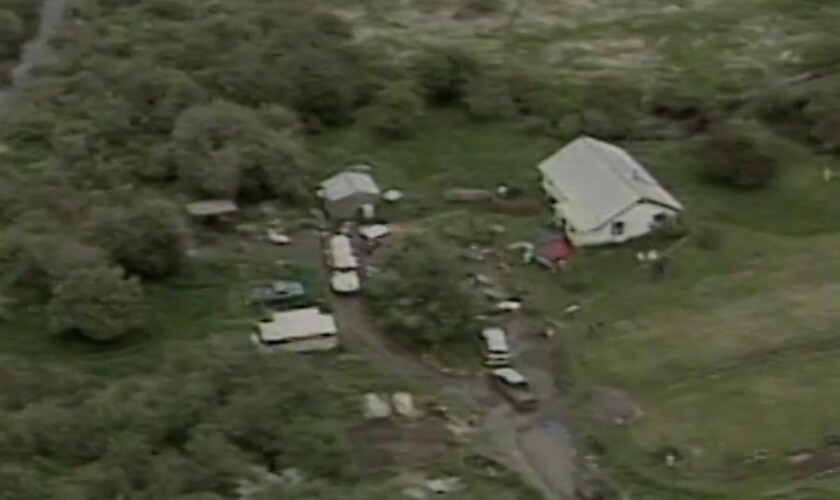
A broken system
Wolfinger retired from the Kootenai County Sheriff’s Department in 2020, and said that although sex offender laws have matured since 2005, the nation still has a long way to go to stop predators like Duncan.
“The problem is that the system is different in every state. In Idaho, you’re either a sex offender or you’re not. In Washington, there are three levels, and I think in Mississippi, there are nine levels,” Wolfinger said. “There needs to be one standardization of all the levels, and there needs to be the ability to do civil commitments so those people aren’t out there hurting anyone else. There has to be some standardization nationwide.”
ADVERTISEMENT
Today, Wolfinger said it would have been more difficult for Duncan to slip through the system.
“I think it would have been harder. I think that if we had standardization, we would all understand what the levels mean and those he demonstrated as a Level 3 offender and he would have been civilly committed,” Wolfinger said.
“He wasn’t even on the radar. We didn’t know about Joseph Duncan until he was caught here in Coeur d’Alene with Shasta Groene. Not having those high-propensity reoffender databases to see who might be in our area and who has a high propensity … we followed thousands of leads. We had over 2,200 tips given to us — called in, faxed in, emailed in — and not one of them led to Joseph Duncan,” Wolfinger said.
“But we had to follow up on all of those, and that takes an incredible amount of manpower. Some were very far-fetched, but some were also very possible,” he said.
Laws related to sex offender registry were created at a national level in 1994 and strengthened in 1996, requiring all states to conduct community notification of sex offenders, and then tightened again three years after Dru Sjodin, a University of North Dakota student, was abducted then murdered in 2003, two years before Duncan’s crime spree.
Wolfinger never interviewed Duncan, but he remembers Shasta well.
“I just learned in the newspaper … that her house just burnt. She has lost everything,” Wolfinger said. “But I haven’t talked to her in years. If I was her, I would probably try to suppress a lot of that.”

ADVERTISEMENT
Writing on the mirror
Before leaving his apartment at 810 7th St. in Fargo, Duncan, typically a fastidious tenant, left a mess — and two cats — behind before he fled west. He also taunted law enforcement with a message on his dining room mirror, former landlord Jeff Ware testified at trial.
“Sorry you missed me,” it said.
Shasta Groene, in a 2012 interview with Idaho TV station KBOI, said what happened to her is in the back of her mind every day. “It’s something that keeps me strong,” she said, “because not a lot of people have survived that kind of thing.”
In court documents, Groene, known as “the little girl who survived a serial killer and was rescued at an Idaho Denny’s,” believed her survival was an accident.
“He told a judge that I taught him how to love and that’s why. I have forgiven Joseph Duncan, not in a way that it was OK for what he did, but in a way that I was going to stop letting it control my life,” Groene said in a report by staff writer Brian Walker in the Coeur d’Alene Press on June 17, 2018, and in The Spokesman-Review. “There were so many times I’d think about the situation and feel bad about not doing something, but now I definitely put the blame on where it belongs.”
At about the same time as the Coeur d’Alene Press article, Groene also began a Kickstarter campaign saying she planned to co-write a book about her experiences with Jamie Sedlmayer.

“In May 2005, my life forever changed down a path I could have never imagined, when a serial killer invaded my home and murdered my mother, step-father, and brother Slade,” Groene said in the Kickstarter campaign for her book.
Also on the Kickstarter page, both Groene and Sedlmayer planned to explore what the Groene family life was like before Duncan “ripped us apart, and what family was after,” Groene said.
“Life has been quite a struggle for me over the years. Most of the scars on my body have appeared to heal, the damage done to my mind and soul is a work in progress. My hope is to help myself heal through writing this book, and maybe encourage readers to hug their loved ones a little tighter, a little longer,” Groene wrote on her Kickstarter campaign.
After the book, Groene and Sedlmayer planned to raise money and interest for a documentary film, with the goal of traveling from Coeur d’Alene to Indiana to visit Duncan on death row, while “stopping along the way at locations relevant to my story, and Duncan’s too,” according to the Kickstarter page.
The book was never published, and Sedlmayer posted on the Kickstarter page that plans were in the works to refund donations.
Repeated attempts by Forum News Service to contact Groene by phone were not answered.
On Feb. 28, a GoFundMe campaign was launched online to help Groene after her trailer burned down, “leaving the single mother and her five children homeless and without any possessions.” By Monday, March 11, they had fundraised $31,990 of a $100,000 goal.
A separate GoFundMe campaign was also set up recently to help her and her five sons buy a vehicle, which by Monday had raised $1,805 of a total $50,000 goal.
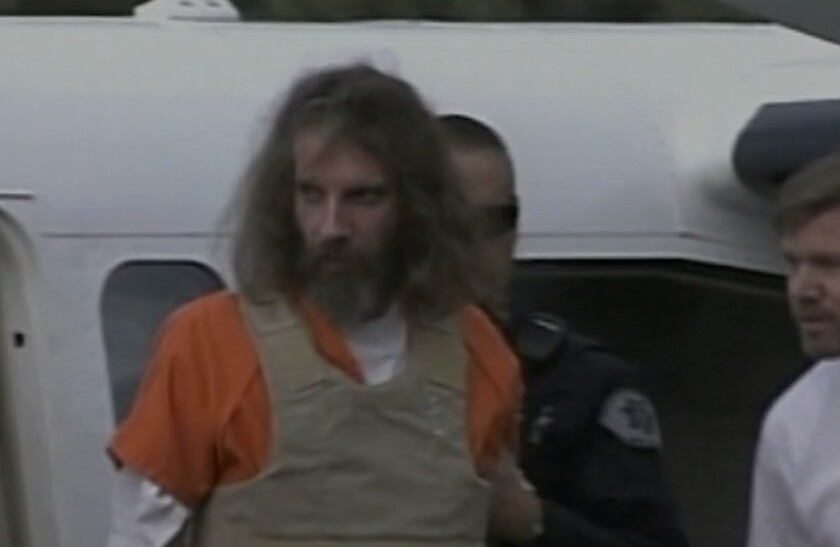
‘Epiphany’
In court records, Duncan took responsibility for his crimes but refused to take the blame.
“Well, he essentially said that the criminal justice system is evil, that the criminal justice system is to blame for what he did. The blame of what happened rests squarely on the shoulders of society and the criminal justice system,” said former FBI Agent Michael Gneckow, assigned to Duncan’s case in May 2005.
Additionally, court records showed that Duncan had a complicated 4-gigabyte file of MapPoint coordinates he thought one day someone would find. One of the points was named “Epiphany.”
“This is the spot that I intended to kill Shasta, but instead I had the ‘epiphany’ that changed everything just a second before I was about to deliver the fatal blow with a large rock,” Gneckow testified Duncan told him.

AnnElizabeth Walker Card, a psychologist at the Federal Correctional Institution in Beckley, West Virginia, who interviewed Duncan, testified about the same epiphany.
“He described that as he was straddling her, he had picked up a large rock, boulder, had it over his head … and was going to bring it down and smash her head. And in the process of doing that, had a realization that she and he were the same person, that they were connected, and that to do so was wrong — and, therefore, he should not kill her and, instead, should turn himself in,” Card testified.
“He decided that he would return her to her home and turn himself in. Those were also decisions that he reported having attributed to this epiphany, this realization … And in that regard, it is society, rather than he, who is ultimately responsible for the actions that he engaged in,” she said.
Days after Duncan died, Groene gave a statement to the press in Idaho, saying that although Duncan was dead: “It doesn’t bring our loved ones back. It doesn’t ease the aching pain of moments that they should be there, and aren’t because of the selfishness of one person.
“One thing is for sure, he does not exist anymore. Now, we can live our lives knowing that. For so long I have been struggling with hate towards that man. Today, I woke up feeling like my soul was finally free. I hope other people affected by Joseph Duncan were able to wake up feeling the same way,” Groene said.




